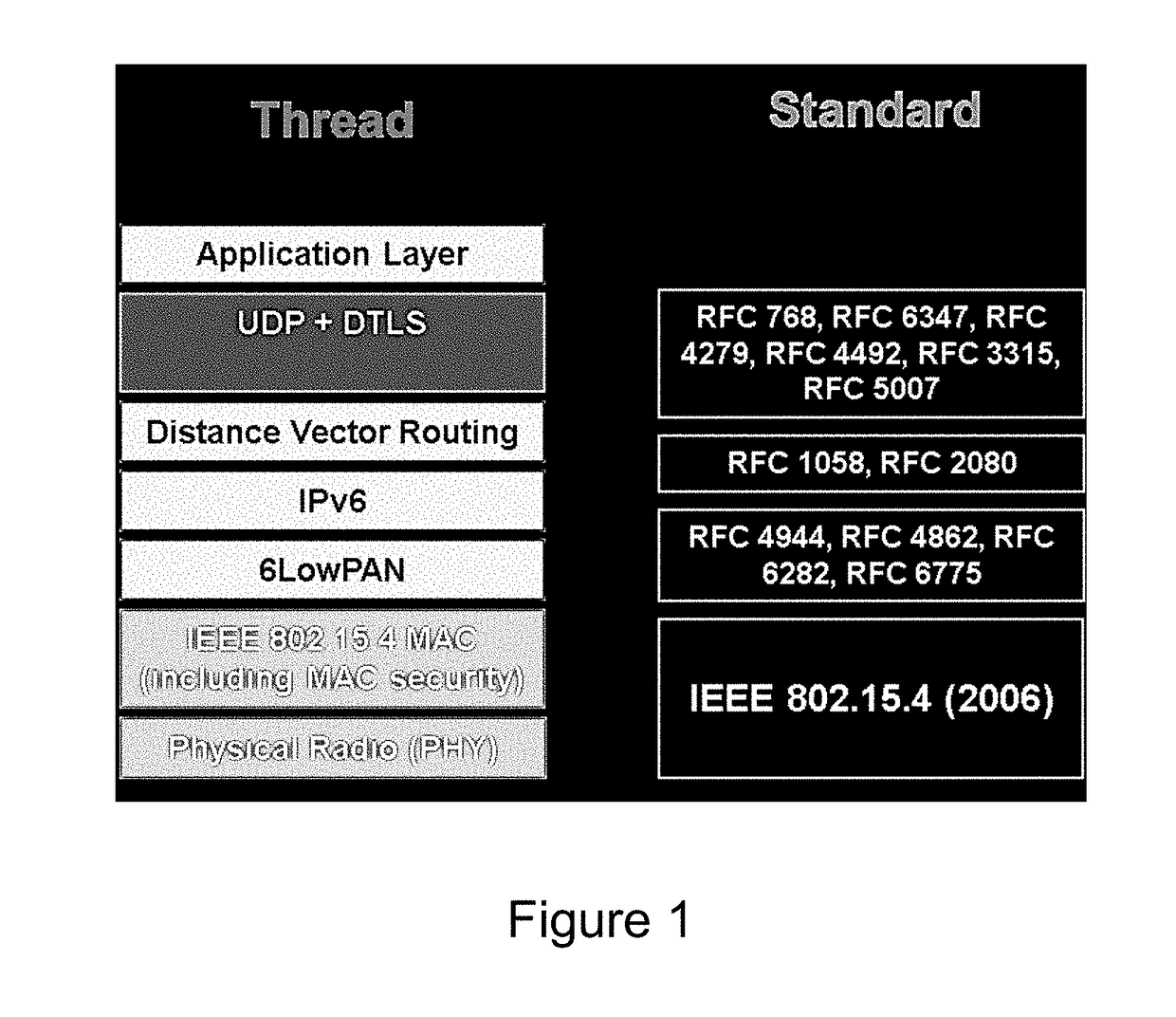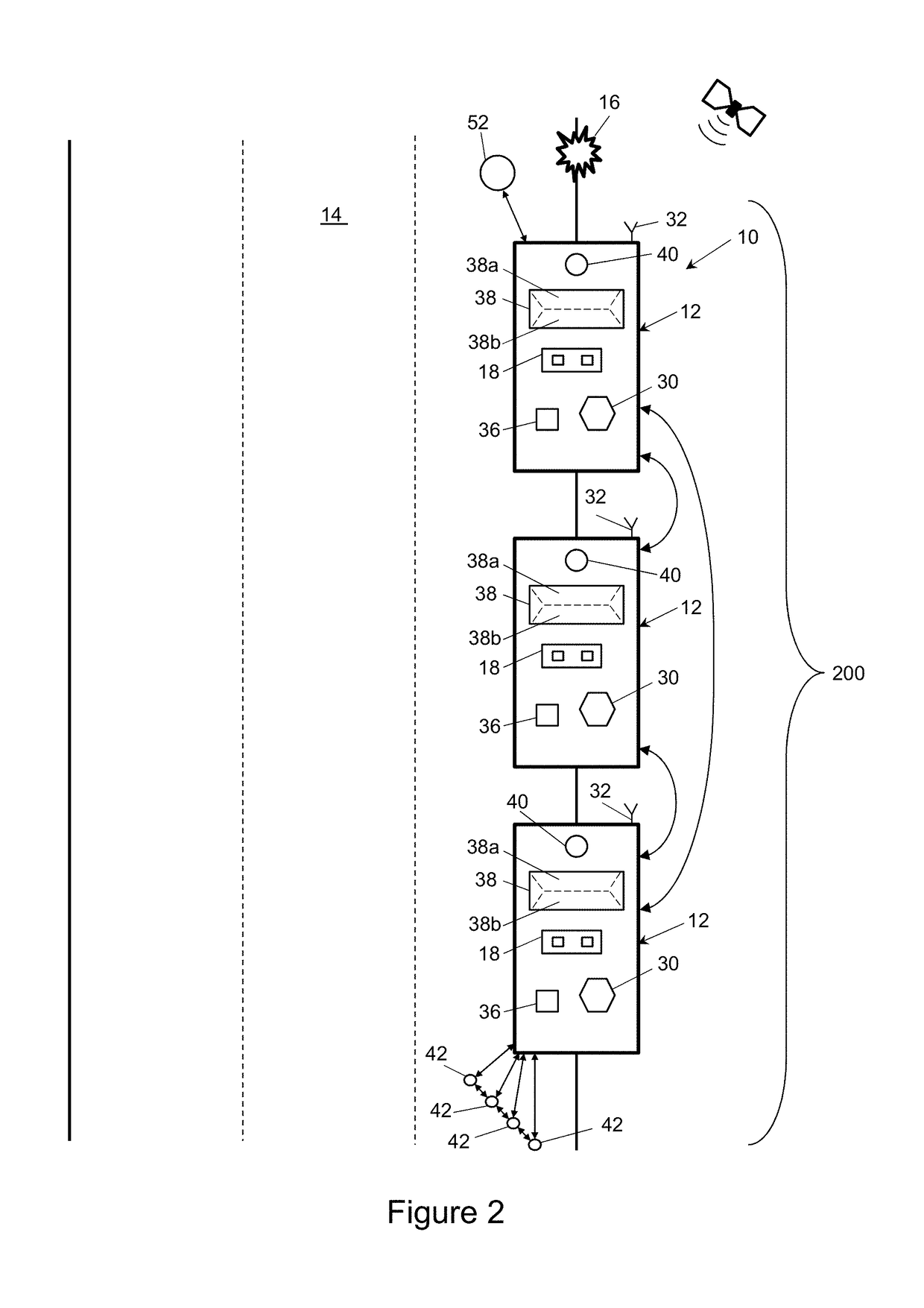Network and connected devices for emergency response and roadside operations
a technology of connected devices and emergency response, applied in electric transmission signalling systems, instruments, transportation and packaging, etc., can solve the problems of inability to coordinate signals, significant risks, and extreme danger of operations conducted on or beside traffic-bearing roadways, so as to improve the accuracy of position detection and enhance the effect of position accuracy
- Summary
- Abstract
- Description
- Claims
- Application Information
AI Technical Summary
Benefits of technology
Problems solved by technology
Method used
Image
Examples
Embodiment Construction
[0018]A wireless local network 10 is employed to automatically and dynamically connect vehicles, traffic directing apparatus and wearable devices into a system 200 to enhance the safety of first responders conducting operations on or near roadways. One example of a network topology compatible with the disclosed system 200 and methods is a wireless mesh network. A mesh network is a local network topology in which the nodes connect directly, dynamically, and non-hierarchically to as many other nodes as possible and cooperate with one another to efficiently route data among the nodes. Mesh networks dynamically self-organize and self-configure, which can reduce installation overhead. The ability to self-configure enables dynamic distribution of workloads, particularly in the event that a few nodes should fail. This in turn contributes to fault-tolerance and reduced maintenance costs. The disclosed wireless local network is self-configuring and conducts many functions without requiring i...
PUM
 Login to View More
Login to View More Abstract
Description
Claims
Application Information
 Login to View More
Login to View More - R&D
- Intellectual Property
- Life Sciences
- Materials
- Tech Scout
- Unparalleled Data Quality
- Higher Quality Content
- 60% Fewer Hallucinations
Browse by: Latest US Patents, China's latest patents, Technical Efficacy Thesaurus, Application Domain, Technology Topic, Popular Technical Reports.
© 2025 PatSnap. All rights reserved.Legal|Privacy policy|Modern Slavery Act Transparency Statement|Sitemap|About US| Contact US: help@patsnap.com



